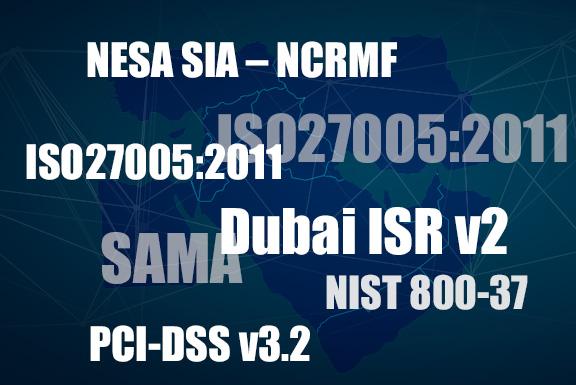- About Us
-
-
- About UsWe are the regional leaders in cybersecurity. We are masters in our tradecraft. We are dynamic, talented, customer-centric, laser-focused and our mission is to defend and protect our customers from cyber adversaries through advisory, consulting, engineering, and operational services.
-
-
- Solutions
-
-
- SolutionsThe cybersecurity industry is fragmented. We have carefully curated an interoperable suite of cybersecurity products and solutions that focus on improving your security compliance and risk maturity that add real business value, effectiveness, and ROI. Combined with our professional services and security engineering expertise we design, architect, implement and operate complex environments and protect your digital space.
-
- Industry
-
-
- IndustryCyber adversaries and threat actors have no boundaries. No industry is immune to cyber-attacks. Each industry has unique attributes and requirements. At DTS we have served all industry verticals since inception and have built specialization in each segment; to ensure our customers can operate with a high degree of confidence and assurance giving them a competitive advantage.
-
- Services
-
-
- ServicesOur cybersecurity services are unmatched in the region. With our unique customer-centric approach and methodology of SSORR we provide end-to-end strategic and tactical services in cybersecurity. We on-ramp, develop, nurture, build, enhance, operationalize, inject confidence, and empower our customers.
-
-
- Vendors
- Products
- Resources
- Press Center
- Tweets
- Support
- Contact
-
Cyber Risk Management
Lorem ipsum dolor sit amet, consectetur adipiscing elit. Ut elit tellus, luctus nec ullamcorper mattis, pulvinar dapibus leo.
DTS can develop risk assessment approach for your organization based on two principles. We also help building metrics to identify asset value in the first scenario based on the criticality of the business services.

Cyber Risk management Framework Development
When it comes to cyber security, organizations face a future in which it’s best to prepare for worst-case scenarios. As the number of cyber breaches and impact increase year-on-year, organizations need to be have better visibility into the cyber risk profile of the organization to prepare and plan for the unforeseen circumstances.
That means breach prevention can’t be the sole cornerstone of an effective cyber strategy. As outlined, the question is not if a company is going to be attacked. It’s now a question of when the attack will come.
- Effective framework that includes the entire organizational eco-system
- End-to-end scope coverage
- Risk assessment based on threat modeling
- Proactive incident response planning
- Dedicated cyber security and risk resources

Cyber Risk management Framework Development
When it comes to cyber security, organizations face a future in which it’s best to prepare for worst-case scenarios. As the number of cyber breaches and impact increase year-on-year, organizations need to be have better visibility into the cyber risk profile of the organization to prepare and plan for the unforeseen circumstances.
That means breach prevention can’t be the sole cornerstone of an effective cyber strategy. As outlined, the question is not if a company is going to be attacked. It’s now a question of when the attack will come.
- Effective framework that includes the entire organizational eco-system
- End-to-end scope coverage
- Risk assessment based on threat modeling
- Proactive incident response planning
- Dedicated cyber security and risk resources

We often find implementing a detailed risk management framework for an organization that has not established sounds controls and not reach the maturity curve expected has the counter effect.







We often find implementing a detailed risk management framework for an organization that has not established sounds controls and not reach the maturity curve expected has the counter effect.






Cyber Risk Assessment
- Asset Based Risk Assessment
- Scenario Based Risk Assessment
- Information Security Standards Risk and Gap Assessment
- Technical Security Controls Risk Assessment
- Cyber Security Process Risk Assessment
Our risk assessment approach is based upon the following core phases and DTS can help at different phases of the life-cycle, depending on the type of risk assessment required we will advise on the best approach to follow;
CATEGORIZATION AND CHARACTERIZATION OF SYSTEM / SERVICE / SCENARIO
IMPLEMENTATION OF SECURITY CONTROLS
SELECTION OF SECURITY CONTROLS
AUTHORIZATION AND ACCEPTANCE
ASSESS THE SECURITY CONTROLS
MONITORING OF THE RISK
Cyber Risk Assessment
- Asset Based Risk Assessment
- Scenario Based Risk Assessment
- Information Security Standards Risk and Gap Assessment
- Technical Security Controls Risk Assessment
- Cyber Security Process Risk Assessment
CATEGORIZATION AND CHARACTERIZATION OF SYSTEM / SERVICE / SCENARIO
SELECTION OF SECURITY CONTROLS
IMPLEMENTATION OF SECURITY CONTROLS
ASSESS THE SECURITY CONTROLS
AUTHORIZATION AND ACCEPTANCE
MONITORING OF THE RISK
Solutions
Network and Infrastructure Security
Zero Trust and Private Access
Endpoint and Server Protection
Vulnerability and Patch Management
Data Protection
Application Security
Secure Software and DevSecOps
Cloud Security
Identity Access Governance
Governance, Risk and Compliance
Security Intelligence Operations
Incident Response
Accreditations

Accreditations

Dubai
Office 7, Floor 14
Makeen Tower, Al Mawkib St.
Al Zahiya Area
Abu Dhabi, UAE
Mezzanine Floor, Tower 3
Mohammad Thunayyan Al-Ghanem Street, Jibla
Kuwait City, Kuwait
+971 4 3383365
[email protected]
160 Kemp House, City Road
London, EC1V 2NX
United Kingdom
Company Number: 10276574
The website is our proprietary property and all source code, databases, functionality, software, website designs, audio, video, text, photographs, icons and graphics on the website (collectively, the “Content”) are owned or controlled by us or licensed to us, and are protected by copyright laws and various other intellectual property rights. The content and graphics may not be copied, in part or full, without the express permission of DTS Solution LLC (owner) who reserves all rights.
DTS Solution, DTS-Solution.com, the DTS Solution logo, HAWKEYE, FYNSEC, FRONTAL, HAWKEYE CSOC WIKI and Firewall Policy Builder are registered trademarks of DTS Solution, LLC.